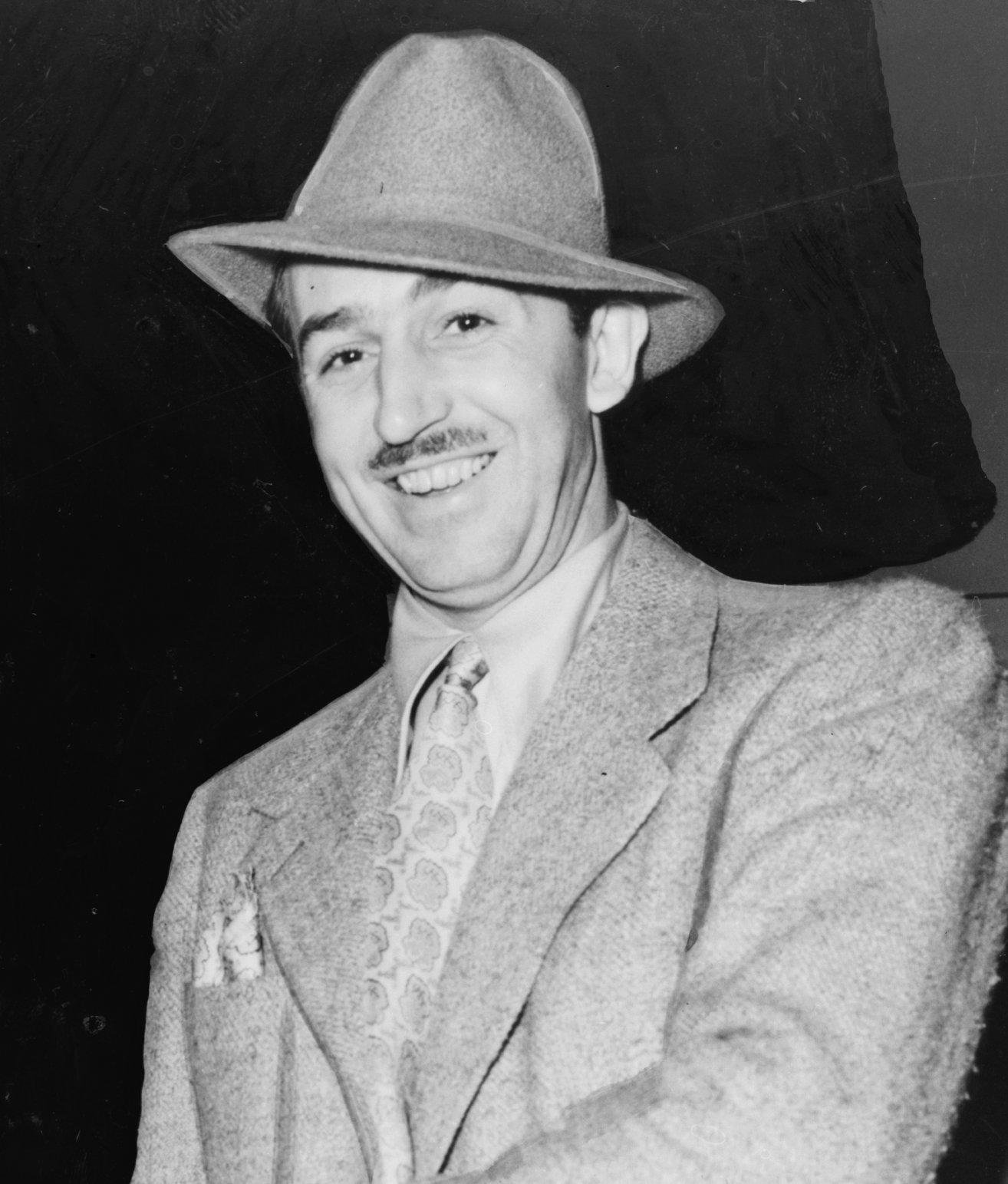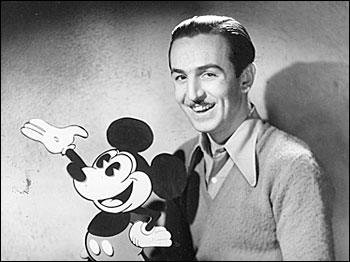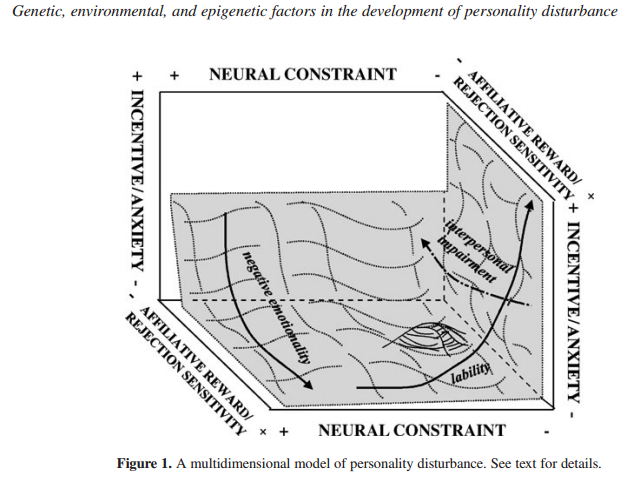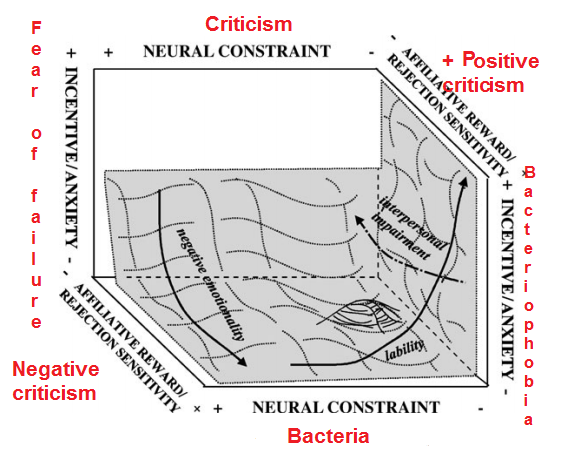Walter Disney and his life have always been a mystery even to the contemporaries, not to mention the researchers of the XXI century.
A creator, innovator, and genius, on the one hand, and a panic-stricken perfectionist, on the other hand, Disney had a number of issues, which were predisposed by the cringe inducting factors that Disney was exposed to throughout his entire life, which such theories as the Five-Factor Model of Personality, Intrapsychic Factors (Interpersonal Theory) and Neurobehavioral Dimensional Model may help define.
By taking a closer look at some of the peculiarities of the environment in which Disney lived at different stages of his life in, one can possibly define the source of the major disorders that Disney had, as well as spot the manifestations of these disorders in some of the works of the great animator.
As it has been stressed above, the research is going to be carried out with the help of such theories as the Neurobehavioral Dimensional Model, Intrapsychic Factors, which belong to the Interpersonal Theory realm, and to Five-Factor Model, which can be described as one of the subcategories of the Theory of Personality Disorder.
Granted that the theories listed above have been tested a number of times and are considered full-fledged basis for conducting significant researches nowadays, it is important to keep in mind that, according to Lenzenweger and Clarkin, first, a number of factors affecting the psychological development of an individual have not been defined, and, second, due to the unique reactions that an individual may display when coming into contact with certain factors (Lenzenweger & Clarkin, 2004), detecting the source of a certain psychological feature or disorder, or even a trait of character is quite problematic.
That being said, it can be assumed that the theories in question can possibly shed some light on how Disney’s personality was shaped and how the process of his personality development affected his art.

Walt Disney: A man who helped dreams come true (2010).
There is no secret that, fort the most part, the basis for the character features that most people acquire when they are well past their adolescence is usually created in the early childhood, when the impressions from the elements of everyday life are far too colorful to be forgotten.
After a careful examination of the environment in which Disney spent his childhood years, one will inevitably spot the points at which the key traits of the Disney that everyone knows and loves started to evolve.
According to what the existing sources say, Disney was born into a family of Elias and Flora Call Disney and their five children. Originally born in Chicago, Walter moved to Marceline (MI) soon after he was born. Developing love for nature and animals, he started drawing.
However, not everything went smoothly in the family of the Disneys. It turned out that Flora was suffering from a mental condition. When Walter was a teenager, his family suffered from fire (supposedly set by Flora), with Walt being the only survivor and sent to his uncle.
At the given point, one could observe the Five-Factor Model coming into motion, since the character traits predisposed by the aforementioned environment, in which Disney’s childhood and youth were spent, were finally developed by that point.
It is quite impressive that the FFM model, which is usually applied very loosely to a real-life example, since in most cases, the factors are far too numerous, or the effects of these factors vary too much in their intensity for the recipient’s character traits to correlate to each of the aforementioned factors to the same extent, in the case of Disney, the major events that caused specific character traits to develop are pretty easy to define.
As the existing sources say, Disney was known for his readiness to experiment, which he displayed since his childhood. However, weirdly enough, the experiences that he was eagerly awaiting could best be described as financial instead of artistic, though these experiences definitely had a sparkle of creativity in them; using his artistic skills, Disney was earning his first wages by selling his drawings to neighbors.
However, such qualities as the spirit of enterprise and ambitiousness, which his openness to experience spurred in young Disney would, later on, transform into artistic creativity and the ability to take risks, which a number of modern entrepreneurs should definitely look into.
For example, it was well known before Disney even started working on his first short that the character that he would focus on would be a bunny named Oswald. In fact, a few shorts released at the very beginning of his career featured Oswald. However, at some point, Disney decided to take chances with a brand new character, which little to no authors used before, i.e., a mouse.
The story of the character’s name, in fact, also represents Disney’s willingness to experiment, which manifested itself in his ability to take a piece of advice from a person whom he trusted; as the existing source say, first, the mouse was named Mortimer, yet Disney’s wife considered the name far too pretentious and suggested turning Mortimer into Mickey.
Walt Disney was a relatively conscientious man – for a businessman, at the very least.
One of the qualities that the given feature of his character manifested itself in, incredible ability to work long hours with no stop for a quick lunch or a short nap was one of the many factors that, ironically enough, predetermined the development of a further neurosis, as the analysis carried out with the help of the Neurobehavioral Dimensional Model will show in the next section of the research.
The key qualities that Disney’s relatively high conscientiousness rates produced concerned his devotion to his profession and the willingness to produce the works that could be considered as coming of age stories, as well as help children learn important life lessons while being entertained by his animated movies.
Ironically enough, being such an extrovert, Disney seemed to have little to no close friends; true, he had a number of business partners, a couple of rivals, and an entire army of fan all over the world, yet very few people actually knew what only close friends could know about him, like his favorite color, the dish that he hated most, etc.
To be more exact, Disney tended to be extravert when it came to discussing everything but himself; as soon as the latter topic was touched upon, his introversion was being pushed to the breaking point, where it bordered reclusion.
As a result, in accordance with the basic principles of the Five-Factor Model, Disney has clearly developed such skills and the ability to communicate his idea clearly, the skill of being a good listener, as well as the ability to take an active part in a conversation.
However, Disney clearly used these skills only to be able to integrate into the bohemian society of the United States and was not striving for communication with the people surrounding them.
In spite of the fact that he was not quite open to communication in the generally accepted meaning of the word, Disney seemed to have developed high tendency to empathize with other people, which must have stemmed from the fact that he needed compassion himself, having obvious family issues since childhood. As a result, Disney was often considered a man with a very big heart – and he clearly was.
Being a kid at heart, he would empathize with children, especially; as one of Disney’s contemporaries, Jimmy McDonald, recalled, “He had a great understanding for the youngsters…” (Disney History Institute, n. d.). In fact, the Disney History Institute provides a tape recording with McDonald reminiscing on one of the cases when Disney’s appreciation for children and young people was outpouring:
Once… they had all the storyboards around and dialogue written underneath so Walt could see it and give it the go ahead. The storyboard director was out there with his little baton and said, ‘At this point narrator will say, “When all the kids get a new bike…”.
And Walt jumped up, and said, “No! We won’t get close to that. We’ll just say when the kids get a bike, because there will be too many kids in this world that will never get a bike.” (Disney History Institute, n. d.)
Sadly enough, along with being extremely creative, Disney was highly exposed to various irritants, which resulted in numerous neuroses.
To top it all, many of his childhood fears have not been vanquished as time passed, but, instead, were piling up until they were released in the shape of numerous fears. It is quite peculiar that, in contrast to other features of his character, neuroticism and the resulting phobias stemmed from Disney’s later experiences.
It is remarkable how the given model not only represents the way in which Disney’s past affected his present and future, but also addresses the issues that shaped Disney’s character as an adult.
To be more exact, the change of environment, which occurred as Disney’s childhood ended and he had to enter the adult world triggered a change in the FFM model, therefore, affecting Disney’s character. As the recent data shows, several breakdowns that Walt Disney had in his adult life were the result of intense and extremely hard work with unbelievably short deadlines.
A very common myth says that Disney was afraid of mice, which is also very peculiar, considering the fact that his main character and the icon of the Disney production is a mouse. However, as credible sources explain, the given statement does not hold any water – in fact, it is historically documented that Disney owned a pet mouse.
However, another peculiar rumor about what Walt Disney feared, the statement regarding Disney’s uncontrollable fear of falling ill appears to be true. The given fact makes it clear that, no matter how hard Disney tried to repress his childhood fears, they still came back in the weirdest shapes possible, altering his life to the point where his genius bordered insanity.
When it comes to analyzing the events that led to Disney’s death, the fact that Disney neglected one of the basic rules of healthcare comes to the forth. The man who was obsessed with blocking the way for numerous bacteria and viruses to his organism died of smoking-induced lung tumor.
Although at first glance, the given fact shatters the Neurobehavioral Dimensional Model implications to pieces, on a second thought, one must admit that the given fact aligns with the basic postulates of the theory perfectly well. Indeed, if considering smoking as one of the few outlets for Disney’s unceasing stress, it can be assumed that smoking was used by Disney as an affiliative reward that would help him bring the stress level down.
With all due respect to Walt Disney’s life and the incredible power of his imagination, when watching his greatest creations, one must admit that, for the most part, these characters were the projections of Walter’s insecurity onto the big screen.
When analyzing the given characters, one might notice a pattern of Disney’s issues development based on the qualities that his characters represented; and, seeing how, for the most part, the leading characters portrayed by Disney displayed their qualities through interaction with other characters, it can be assumed that, with the help of the former, Disney managed to convey the issues that he faced when coming into contact with other people.

Walt Disney and Mickey Mouse.
Being the “punching bag that laughs,” Mickey Mouse can be seen as Disney’s alter ego; however, it is worth keeping in mind that the given character replaced a much more violent Oswald, the Rabbit character.
In fact, the early sketches of Mickey Mouse wee not very child-friendly, either. Therefore, it can be assumed that, by introducing the character of Mickey to the audience, Walt Disney was trying to give vent to his aggressive feelings.
The first full-length animated movie to be featured in the U.S. period, this is Disney’s doubtless triumph.
However, when looking at the characters closer, one will be able to spot the fact that Snow White’s childhood had a lot in common with the one of Disney – both were orphans, both had to put up with the difficulties of adoption, and both knew exactly what they wanted, Snow White singing, “I’m wishing (I’m wishing) for the one I love to find me (to find me) today (today)” (Disney & Hand, 1937) and Disney saying, “All our dreams can come true if we have the courage to pursue them” (Bickford, 2013, p. 56).
Of the very few male leading characters featured in the animated movies of the Golden Disney Era, Peter Pan must have been the essence of what Disney always wanted to be – a child at heart with the wildest imagination and the opportunity to play as much as he wanted. It can be assumed that Peter Pan was a dream of the childhood that Disney never had.
The entire world has no room for hatred spilled on Walt Disney by thousands of feminists for creating this character. Indeed, Cinderella is pretty bland, and there is hardly any character development throughout the entire movie. She wants a handsome prince, does nothing to achieve her goal, and then, a fairy godmother comes out of nowhere to grant her wishes.
However, as much flawed as the given character is, thinking that there is nothing more to her that the blandness that allows every single girl to associate herself with the given character means ignoring Disney’s famous quote saying that Cinderella “believed in dreams, all right, but she also believed in doing something about them.
When Prince Charming didn’t’ come along, she went over to the palace and got him” (Fisher, 2012, n. p.). The given specifics of the character displays the exact same pattern as the one that Disney preferred in building his relationships with the rest of the world; likewise, he preferred to grab the bull by the horns and handle the obstacles that life put in front of him.
Disney’s education is a perfect proof for his consistence and efforts; in spite of a dropout in his teenage years, Disney managed to not only get the basic knowledge and skills, but also graduate from three Universities instead of one, i.e., UCLA, the Harvard University and Yale (Wasko, 2013, p. 1948).
Therefore, the characters created by Disney reveal a lot about his character and psychological issues. Being a projection of his childhood problems onto the cartoonish reality, they could be seen as a coping mechanism.
Apart from inspiration and incredible lust for life, Disney acquired a number of fears under the influence of the environment that he was exposed to in his youth and adult life.
At the given point, the theory of Neurobehavioral Dimensional Model is going to be used in order to arrange the constraints that played the most important part in shaping Disney’s personality, as well as the incentive or anxiety that these constraints resulted in. As Depue explains, the process of behavioral change occurs in accordance with the following pattern:

Depue, R. A. (2009). Figure 1. A multidimensional model of personality disturbance. In Depue, R. A. Genetic, environmental, and epigenetic factors in the development of personality disturbance. Development and Psychopathology, 21, p. 1033.
As it has been mentioned, the life of a great animator, though definitely exiting, was incredibly intense, which led to the development of a neurosis and, therefore, affected his behavior considerably.
Despite the fact that Disney was not afraid of mice, as the popular urban legend says, it must be admitted that the great artist did have a number of phobias, with the credit of the greatest of them going to the phenomenon known as bacteriophobia.
Washing his hands thoroughly every moment when a piece of soap and a towel were in the vicinity, Walt Disney soon became famous not only as the creator of Mickey Mouse, but also as one of the most psychotically neat people in the studio.
As the existing historical records show, Disney was literally obsessed with cleanness, as well as a bunch of other American celebrities, such as Elvis Presley, Frank Sinatra, etc.: “Afflicted with OCD as was Howard Hughes, Walt Disney, Frank Sinatra and Donald Trump, he [Elvis] brushed his teeth over and over” (Landrum, 2007, p. 54).
As one might have noticed, Landrum goes as far as claiming that Disney suffered from an OCD, i.e., an obsessive-compulsive disorder. While the given statement might be seen as quite a stretch, it is still necessary to keep in mind that bacteriophobia was not the only reason for the animator to wash his hands for no obvious reasons; as Landrum states, for Disney, it was the means to get rid of the stress that he was constantly under.
The aforementioned fact reveals another facet of a nearly psychotic mind that Disney was at the time when he reached the peak of his success. With the fear of getting ill and suffering the following failure as a professional, Disney was clearly under two neural constraints, the latter clearly being the dominant one.
As a result, his rate of rejection sensitivity was dangerously high, which led him to another threat of a nervous breakdown. In other words, with a Multidimensional Model of Personality, the psychological pressure that Disney was under could be depicted in the following way:

Figure 2. Genetic, environmental, and epigenetic factors in Walt Disney’s personality disturbance.
The given scheme shows explicitly that Disney was affected by two stress factors, one of which (the fear of bacteria and contracting a virus) was induced by another one (the fear of receiving negative critical responses and failing as a creator and animator).
It could be argued, naturally, that the given disturbances did not bother Disney as a professional – quite on the contrary, these aspects of his personality made him excel in every single work that he crafted, turning each of his fairytales into an animation masterpiece.
However, casting a single glance at Disney’s personal life and phobias that his life was literally filed with, one will inevitably realize that his animation was practically the only field that offered him a moment of relief.
According to the results of the given assessment, Disney did have a number of issues concerning his psychological evolution, and most of these issues were detected with the help of the Neurobehavioral Dimensional Model, Five-Factor Model of Personality and Intropsychic Factors.
It could be argued, though, that what has been discovered or proven after the given models have been applied is only the tip of the iceberg and that Walt Disney’s personality was far more complex and curious than what has been detected and analyzed with the help of the models and theories in question.
However, as far as the application of the given models goes, the given research shows clearly that they can be used efficiently as the means to locate the sources of a person’s psychological issues.
Despite his image of an audience-pleasing sentimentalist with an edge and a creator of heartwarming family movies, Walt Disney definitely had his cupboard full of skeletons. It could be argued, of course, that the fears of his were the defining factor in his creativity, seeing how most of Disney feature-length movies and shorts incorporate similar features and elements.
Analyzed from several perspectives, Disney’s personality appeared to be influenced greatly by certain disorders, such as several acute phobias and neuroses, which were induced by several outside factors that Walt Disney was exposed to as a child, adolescent and adult, as explained by the theories of five factors, intrapsychic factors, and neurobehavioral dimensional model, and which shaped Disney’s life and career, making him one of the weirdest, most mysterious and by far the most creative people of the century.
Reference List
Bickford, J. (2013). American comeback. Las Vegas, NV: American Comeback Publishing.
Depue, R. A. (2009). Figure 1. A multidimensional model of personality disturbance. In Depue, R. A. Genetic, environmental, and epigenetic factors in the development of personality disturbance. Development and Psychopathology, 21, p. 1033.
Depue, R. A. (2009). Genetic, environmental, and epigenetic factors in the development of personality disturbance. Development and Psychopathology, 21, p. 1031–1063.
Disney History Institute. Compassionate Walt. A memory of Jimmy McDonald. Web.
Disney, W. (Producer), & Hand, D. (Director) (1937). Snow White and the seven dwarfs [Motion picture]. Burbank, CA: Walt Disney Productions.
Fisher, R. (2012). Not another dating book: A devotional guide to all your relationships. Minneapolis, MN: Biblica, Inc. Web.
Landrum, G. N. (2007). Paranoia and power: Fear and fame of entertainment icons. New York City, NY: Morgan James Publishing.
Lenzenweger, M. F. & Clarkin, J. F. (2004). Major theories of personality disorder. New York, NY: Guilford Press.
Walt Disney: A man who helped dreams come true (2010). Web.
Walt Disney and Mickey Mouse. Web.
Wasko, J. (2013). Understanding Disney: The manufacture of fantasy. Malden, MA: Polity Press.